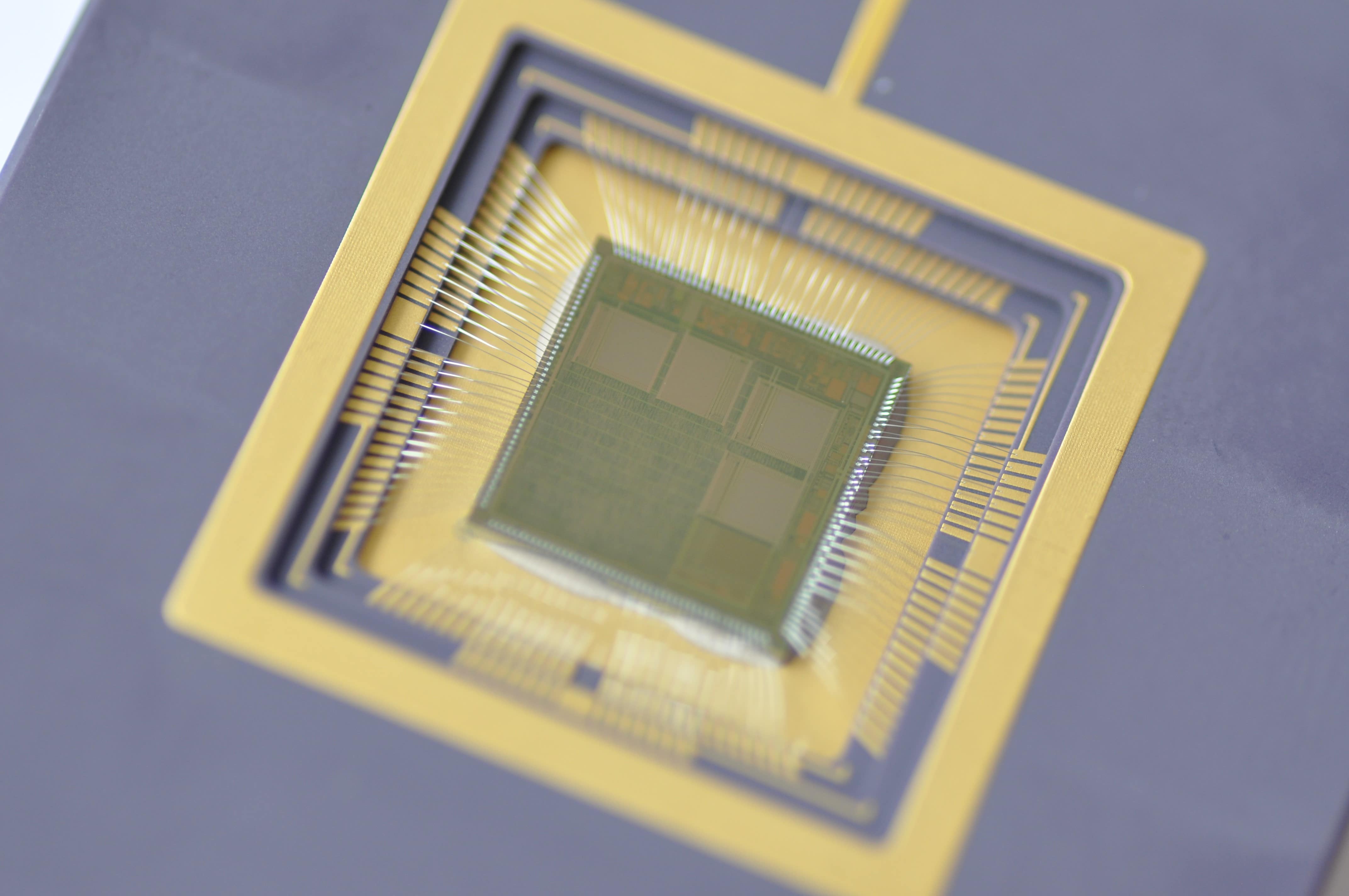The competence Mixed-Signal IC Design develops ASICs in cooperation with customers from the initial idea to the ready-to-use device in the target package. Thanks to many years of know-how, we can offer professional support in system design and develop IC solutions for these systems. The service portfolio in Mixed-Signal development extends from the concept to the qualified silicon in the package, which are tailor-made to fit the customer's environment. The application area of the IC solutions ranges from high & medium volume automotive and industrial applications to small series with application areas in medicine and aerospace. The advantage of such a custom IC development for the customer is the optimal system integration with high efficiency for the target application, high compactness with increased performance, as well as the cost advantage compared to discrete realized circuits.
Cost efficiency is a top priority in the development in order to be able to offer customers a high level of cost-effectiveness through IC development, depending on volume and product life cycle. Of course, the most cost-efficient technology for the required performance is also selected on a completely individual basis.
IP - Core Design
Mixed-Signal IC design requires special knowledge, design methods and experience, especially when sophisticated analog circuit blocks have to be implemented. The competence area Mixed-Signal IC Design benefits from many years of experience in various foundry processes in technology nodes from 0.35 µm to 22 nm and can therefore design with a high degree of confidence. The modern infrastructure and industry-standard design tools used at the Fraunhofer IMS are also helpful. In particular, sophisticated IP cores for signal conditioning can be used and realized, which include:
- low-noise analog signal conditioning
- analog-to-digital converters (ADC)
- Digital-to-analog converters (DAC)
- time-to-digital converters (TDC)
- image sensors
- sensor read-out front-ends (inductive, capacitive, resistive, photosensitive)
- Front-ends for RFID (HF, UHF, SHF)
- Monolithic integrated sensors
Full integration
In addition to the complex IP cores, which are custom designed and provide the main external function for the customer, in Mixed-Signal IC design a number of "hidden" circuitries that work in secret for the customer and is essential for stand-alone operation of the IC are required. These include reference voltage generation, clock generators or operational amplifiers, all of which are grouped under the term "power management". Adding such circuit blocks and combining them into a stand-alone IC is called "full integration" or "design assembly". The competence area Mixed-Signal IC Design has a large number of existing power management IPs for full integration. The power management blocks can either be used 1:1 in a new development or are adapted slightly if required. Re-use of existing blocks minimizes design risks and there is little cost to the customer. This is in line with the approach of cost-efficient design. Low risk porting to other processes is possible if specification requirements make this necessary. Existing power management IPs include:
- voltage regulators
- temperature-compensated voltage and current references
- power-on reset
- operational amplifiers
- clock generation
- frequency synthesizer
